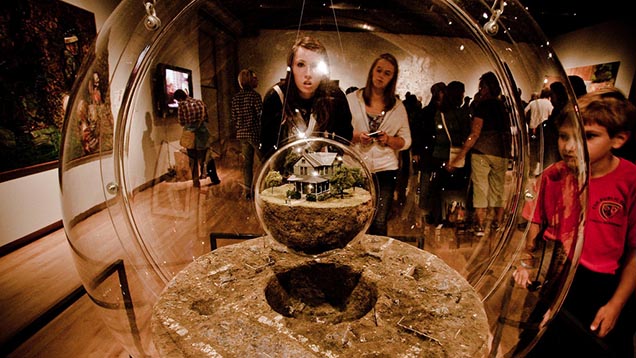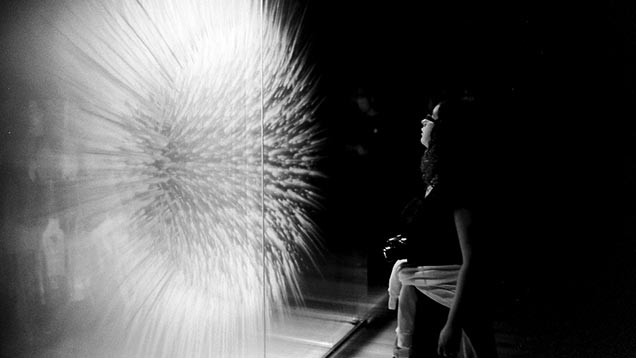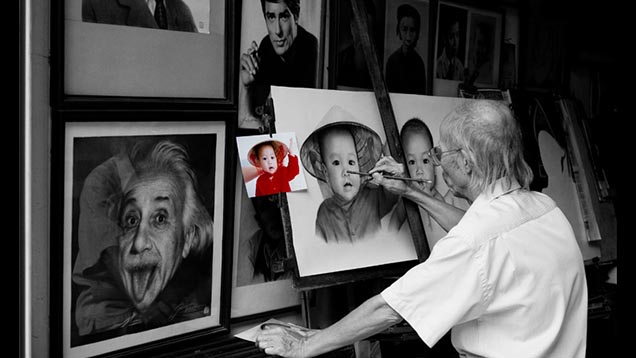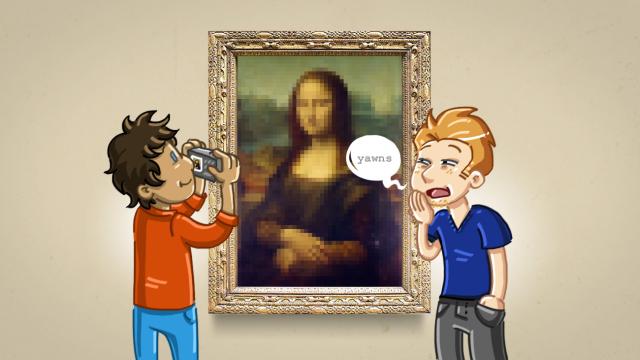You might roll your eyes when your in-laws want to visit the art gallery. You might also get anxious and start thinking of things to say so you don’t look dumb. But art doesn’t have to be a chore. Here’s how you can better consume art so you can have a shot at enjoying the experience.
Photos by keith ellwood, Twentyfour Students, Nathan Umstead, Chad VanWalsum and Tong Tuan Anh
Read The Explainers And Pay For Voice Guides

Whether it’s a painting, recording, sculpture, building, or some other art form, a piece of art is the result of feelings from a certain time and place in history. Even just a brief explanation of that history empowers us, as an audience, to understand and empathise with artists more.
It helps to follow experts as they explain their interpretations of art pieces, because they have studied the field. Similar to how a chef takes raw ingredients and prepares food, an art expert spends time with a piece and prepares explanations so you can consume art more easily. For example, have a look at Art as Therapy.
Naturally, different art forms will have different types of explainers. Voice guides are great for art galleries; books can be helpful for visual art. It could also get more specific: Genius.com is great for hip-hop culture and music, and is quickly expanding into other musical types.
If you have a friend who’s extremely knowledgeable about the art form you want to see, go with them. It makes a world of difference. I went to an art gallery with a friend who studied art history, and she shared relevant information that I wouldn’t have known about how the artist’s life affected their paintings.
Remember to balance between getting context and actually feeling the art. I spent a lot of time reading the captions to reinforce my own understanding, but she spent most of her time looking at the actual piece and pointed stuff out that I likely wouldn’t have seen. Although understanding context is important, actually consciously consuming the art is equally (if not more) important.
Pay Attention To Your Reactions: Consume Art Consciously And Mindfully

A lot of times, we try to examine a piece of art based on skill (“Wow, I could never do that” or “Oh, my kid could have made that that”). However, it’s important to remember that judging a piece of art takes your attention away from your reaction to, and feelings about, the actual piece. Instead, shift your attention to your reaction to the art. How are you feeling when you hear the piece, or see it, or walk through an incredible piece of interior design or architecture?
This is why exploring abstract art can be so challenging. Many people quickly dismiss abstract art as something elementary, vague and/or pretentious. This makes it the perfect target for being mindful as you consume it. Don’t judge it. Immerse yourself in it and feel it. Quora user Christopher Reiss advises against trying to “see” things in abstract art (“It’s not a [rorschach] test”) and explains how to consume a Jackson Pollock painting:
It’s paint and surface, nothing else. Feel the swirls. Their energy. Their tangling. Pollock goes all the way to the edge of the canvas where it’s just as busy as the centre. Feel the tension as everywhere the eye looks, you miss something. It’s hard to take in.
It can be tricky to balance spending time understanding context and history, while also being patient and attentive enough to examine the art and how you react to it. To help with the balance, ask yourself some questions without judging the art or comparing it.
Think About Art: Ask Guiding Questions

Questions can be great guides to focus your mind as it processes the art piece. There are different things to be sensitive to in each art form. For example, in visual arts, you’ll want to look for symbols. Consider the colour palettes and combinations. When walking through a piece of architecture, ask yourself why the artist designed certain details or nuances. I’m no architecture whiz, but have a look at the concrete blocks on the exterior of Frank Lloyd Wright’s Ennis House. When you’re listening to a live performance or a soundtrack, think about the beat, tempo and mood changes throughout the songs. In some cases, listen to the lyrics and think about their possible meanings (or double and triple meanings).
When art academic Terry Smith confronts a work of art, he describes the four questions he tries to answer:
- What am I looking at? (Or listening to, or walking through?)
- How was it made?
- When was it made, and what was happening in the world at that time?
- What is it saying? What is its meaning to the artist, and to us now?
There are many guiding questions you can ask, and each art form has different specific ones. For example, here are dozens of questions that you could ask while looking at a piece of visual art. You could tweak some of these questions to be more relevant to another art form. For example, you could change “How would you describe this painting to a person who could not see it?” to “How would you describe this song to a person who could not listen to it?”
Learn How People Make Art

The final product of art may look like it’s easy to make. However, you never truly grasp the difficulties and nuances of a process until you learn about — and ultimately try — it. For example, rap may not sound like anything more than simple rhyme schemes and poems. Yet as Complex Media’s Editor-in-Chief and Chief Content Officer Noah Callahan-Bever writes:
If you’re gonna shit on someone’s rhyme, you should try, at least once, to sit down and write a 16. It’s hard. Don’t get me wrong, everyone is entitled to their opinion as a listener and consumer, but a little respect for the difficulty of the process may inform how you express your dissatisfaction.
A good first step to understanding how people make art could be to simply watch the process. For example, one of my favourites is watching how much work actually goes into producing what some may call a “simple” beat.
If you find yourself particularly curious about a certain art form or type, consider taking a class. It’s a step that will almost definitely further enhance your taste, understanding, and empathy for art. Quora user Joshua Engel explains how to understand Shakespeare, but his advice can be applied to all art forms:
It’s not a secret, any more than it’s a secret to learn to enjoy food by eating and cooking things, and not by reading cookbooks without ever tasting. Yes, the language forms a speed bump, but it’s not nearly as big a hassle as it’s made out to be, because it’s not the point of the exercise. Watch the plays, enjoy the plays, then read the plays to see how the words went into making up that enjoyable experience.
Once you explore the process behind the art, you may grow to appreciate the dedication and work ethic that goes into each piece even more.
You Might Eventually Even Like Art
Hopefully, some of these techniques will enable you to hate art less (and maybe even grow to appreciate certain forms). Enjoying art doesn’t take a completely different way of thinking. Instead, it takes a bit of empathy and understanding, and a lot more focus and being mindful of the experience. In today’s fast-paced world, simply consuming art can be a challenging experience, but it’s one that is also extremely rewarding.

Comments
2 responses to “How To Stop Pretending And Actually Enjoy Art”
Some of this reminds me of art class in high school, which is what made me hate art. But, it was a good read, and hopefully I get a chance to try this soon!
Step 5: Buy lots of my art: http://goo.gl/15F2U
Seriousness aside, the bit about working out how they did it is great fun. People seem to assume that art is someone saying “Heh, if I just mash my brush against the canvas I can sell it for millions” when in fact the art is thought out and is a collective work of a person’s life.
Plus when you see how some of these people paint (e.g. https://www.youtube.com/watch?v=PSe9cF3RHyA ) you get a new appreciation for art.